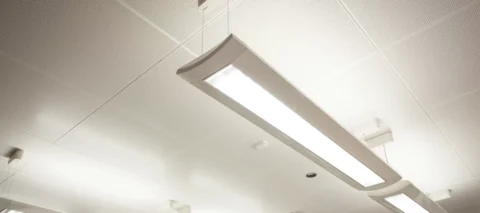Botox and similar medications like Dysport, Xeomin, and Jeuveau are incredibly popular, non-surgical cosmetic procedures. These injectable neurotoxins are capable of relaxing facial muscles in order to lessen the appearance of fine lines and wrinkles.
Although Botox is generally safe when injected by a skilled professional like Dr. Soni, some patients develop drooping eyelids that cause the face to look asymmetrical.
What Are Droopy Eyes and How Are They Related to Botox?
Droopy eyes, or ptosis, occur when the levator palpebrae superioris muscle, responsible for lifting the eyelid, weakens. This condition can be an adverse effect of a Botox injection if the toxin spreads to unintended muscles, affecting the receptors in the biochemistry of the eye.
How Does Botox Affect Muscles Like the Frontalis and Levator Palpebrae Superioris?
Botox acts as a muscle relaxant by blocking nerve signals in the muscles where it is injected. It targets receptors in the muscle’s biochemistry.
Related Studies on Botox and Muscles
| Topic | Research Insights and Authors |
| Botox on Adjacent Muscles | Botox in the target muscle affects force production and also impacts neighboring muscles. M. Yaraskavitch et al., 2008 |
| Botox and Muscle Thickness | Botox changes muscle thickness but not subcutaneous thickness. Gunwoo Park et al., 2018 |
| Botox and Acetylcholine | Botox inhibits muscle contraction by blocking acetylcholine release. W. P. Cheshire et al., 1994 |
| Frontalis Contraction | Cessation of Frontalis contraction can be achieved with Botox. G. B. Ben simon et al., 2005 |
| Muscle Groups and Botox | Understanding specific muscle groups can prevent poor outcomes like lip droop with Botox. J. Spiegel et al., 2005 |
How Can One Differentiate Between Wrinkles and Droopy or Hooded Eyelids?
Wrinkles are lines and creases that form in the skin, commonly due to aging or repeated facial expressions.
What Should You Do if You Get Droopy Eyes After Botox?
If you experience droopy eyes after Botox, consult a health professional for proper diagnosis and treatment. Droopy eyelids usually resolve in 4-6 weeks.
Potential remedies include eye drops (e.g., Iopidine) for eyelid drooping, and targeted Botox injections to counteract relaxed eyebrow muscles.
Are There Medications or Eye Drops for Fixing Droopy Eyes After Botox?
Apraclonidine eye drops and other medications are sometimes prescribed to temporarily alleviate the symptoms of droopy eyes caused by Botox.
However, Dr. Soni stresses that medication is generally not a permanent solution and may have its own risk of adverse effects.
How Ptosis Develops After Botox

The scientific name for eyelid drooping is ptosis (or blepharoptosis). Unlike congenital ptosis — where the eyelid droop is already present at birth — droopy eyelids are often acquired after a bad Botox injection.
In a study, it was found out that Ptosis can develop following autologous fat injection into the upper eyelid, although it rarely occurs during the procedure itself.
Total Patients: 5 (All Female)
Mean Age: 40.6 years old
| Complication Details | Number of Cases |
| Ptosis Cases | 5 |
| Requirement for Fat Removal | 5 |
| Levator Aponeurosis Advancement | Variable |
Another study, “Unilateral transient mydriasis and ptosis after botulinum toxin injection for a cosmetic procedure.” showed the possibility of developing ptosis after a botox injection.
The case involves a 36-year-old nurse who experienced mydriasis (dilated pupil) and ptosis (drooping eyelid) in her right eye after receiving botulinum toxin injections for cosmetic purposes.
The botulinum toxin was administered by a medical doctor who was not an ophthalmologist. The patient was treated with topical apraclonidine 0.5% ophthalmic solution, which reduced the ptosis and improved her visual axis.
The mydriasis lasted for three weeks and then disappeared, while the mild ptosis continued for three months but eventually resolved completely.
The Botox cosmetic works through its main ingredient, botulinum toxin, which temporarily paralyzes the muscles in the face. When the muscles are paralyzed, they are unable to contract and form unwanted crows feet, frown lines, smile lines, and forehead wrinkles. However, an inexperienced injector may unintentionally inject excessive Botox too close to the levator palpebrae or frontalis muscles.
The levator muscle is responsible for maintaining the eyelids in their normal position. When Botox is injected around the eyelid, the formula migrates to the levator muscle and leaves it unable to control the eyelid in raising or lowering. Eyelid drooping then occurs, causing a saggy appearance and obstructing vision in severe cases.
On the other hand, Botox injected into the forehead to reduce wrinkles may also migrate to the frontalis muscle, which is responsible for raising the eyebrows. An over-relaxed frontalis muscle can cause the brow to descend, crowding the upper eyelid and creating a droopy eyebrow. In rare cases, the only treatment option for this complication is blepharoplasty, or cosmetic eyelid surgery, to remove redundant eyelid skin.
Will The Eyelid Droop Last Long?
Droopy eyes are a rare and temporary condition. Although it can be embarrassing in social and professional situations, it’s neither life-threatening nor permanent.
Per Dr. Soni, Botox effects are not permanent, the problem usually reverses itself in 3 – 4 months when the Botox wears off.
During this time, however, patients may get muscle weakness in the upper eyelid. Aside from drooping, patients may also have:
- Lazy eye: Lazy eye is a condition that makes patients unable to fully open their eyes. If the droop is severe, they may have vision problems.
- Eye heaviness: Eye heaviness occurs when there is a heavy feeling in the eyelid that grows worse throughout the day.
- Lower quality of life: Because the eyes are experiencing discomfort, daily tasks like applying eye makeup may be difficult to perform.
Certain medications can be helpful in addressing any side-effects and camouflaging the droop until the Botox effects subside.
How To Prevent A Drooping Eyelid
Not every Botox patient has to suffer from droopy eyes or a sagging brow. In this section, Dr. Soni shares different ways to prevent this particular side-effect from occurring, such as:
1. Visit a board-certified dermatologist or plastic surgeon.
The first and best way to prevent sagging skin developing over your eyes is to visit a board-certified medical expert. All too often, droopy eyes happen because the injector lacks the proper training, experience, and know-how to perform the treatment accurately. They either utilize a too-high dose or inject the Botox in the wrong area.
An experienced injector like Dr. Soni would have a thorough knowledge of facial anatomy, so they can make educated decisions on the specific locations and depths to inject Botox. Prior to the procedure, a well-trained surgeon would look at the facial muscle movements of the patient to accurately map injection points to the millimeter.
2. Don’t use generic botulinum products.
Before the procedure, it’s best to check with your board-certified physician to confirm that the botulinum injections are from a well-known brand name manufacturer. Botox is only manufactured by Allergan, while other quality products are Dysport by Medicis and Xeomin by Merz.
All three products have undergone extensive testing by thousands of doctors and are considered the best in the market. This means they would produce more predictable results compared to no-name, generic botulinum toxin.
3. Explain your full medical history to your cosmetic surgeon.
Patients who have had previous facial surgery and a history of Bell’s palsy are more likely to develop a droopy eye after neurotoxin wrinkle injections. It’s important to be honest with your doctor about your complete medical history and previous cosmetic treatments, especially those performed within the past few months.
At Ethos Aesthetics + Wellness, Dr. Soni checks if you’re taking medication like sleep aids, allergy medicine, blood thinners, or muscle relaxants.
Your age, past sun damage, and other lifestyle factors could also affect your treatment. If there are any conflicts between your medical history and your beauty goals, your doctor may opt to postpone treatment or propose an alternative procedure, like a dermal filler, which may better suit you.
4. Follow your doctor’s instructions completely.
Follow pre-treatment and after-care instructions to prevent complications from occurring. Avoid rubbing or massaging your face for a full day after the injections to help stop the medication from spreading beyond the injected area.
5 Ways To Treat Eyelid Ptosis
If you suddenly find yourself suffering from eyelid ptosis, don’t panic. It’s not a life-threatening problem and can easily be resolved by a qualified physician. Here are five ways you can treat droopy eyes according to Dr. Soni:
- Just wait: You don’t have to do anything to correct uneven eyebrows or eyelids, as the effects wear off after 4 – 6 weeks. Of course, it depends on how much Botox came into contact with the eyelid muscle and how serious the Botox migration was in the first place. Usually, it takes less time because only a low dose reaches the muscle. However, you’re going to walk around with one of your eyes half-shut for a few weeks.
- Muscle massage: One option to treat uneven eyelids is to exercise the drooping muscle or “wake” it up. Experts recommend massaging the affected eyelid with the back of an electric toothbrush for several minutes a day; this helps stimulate the muscle and reduce the amount of time it takes for Botox to dissolve. Wait until at least a full day has passed since getting your shots before you massage the treatment area.
- Eye drops: Your doctor can prescribe a special eye drop like apraclonidine, which signals the muscle receptors to contract and raises the lid by 1 – 2 mm. Depending on your physician’s assessment, you would most likely need to apply 1 – 2 drops thrice a day.
- Botox brow lift: Adding more Botox doesn’t sound like a good idea, but injections to the depressor muscle can make your features look more symmetrical and reduce heaviness in the brow. Injecting a few units under the tail of the eyebrow can open it a little wider and counteract the excess relaxation of the eyebrow muscles. Ideally, patients should wait up to 14 days to check if they’re experiencing an eyebrow droop or weakness in the forehead muscle.
- Blepharoplasty: Sometimes, there is excess skin on the upper eyelid which cannot be addressed by neurotoxin products. If this is the case for you, an eye lift or eyelid surgery may be the best solution to remove the extra skin, reduce bags or fat from the eyes, and minimize dark circles as well. Although it may sound intimidating at first, talking to a qualified oculoplastic surgeon may be able to help ease your worries.
Is Botox Worth The Risk?
Dr. Soni posits that Botox injections administered by a licensed provider present very low risks for most people. Discussing your full medical history and concerns with your doctor can help determine if the potential benefits of Botox are worth those minimal risks for your individual needs.
The chances of Botox patients getting a droopy eyelid from the procedure are very small to begin with, so potential patients don’t have much to worry about.
The likelihood of developing brow ptosis is even smaller if you’re in the hands of an experienced Botox injector, because no other medical professional knows facial anatomy like a board-certified plastic surgeon does.
You can be sure they would have the background and experience that result in the best outcomes for you. A skilled cosmetic surgeon would also be able to help minimize the possibility of developing side-effects, including:
- Teary eyes
- Bruising
- Dizziness
- Headaches
- Swelling
- Blurry/double vision
Furthermore, Botox injections are the most popular form of cosmetic surgery worldwide. Millions of treatments are performed yearly and not just for aesthetic reasons either. Botox is an effective, albeit temporary, solution for medical conditions like blepharospasm, hyperhidrosis, and chronic migraines. Whether you’re interested in smoothing out wrinkles or gaining relief from physical discomfort, Botox is definitely something to consider.
Experience Safe Botox Treatments With Ethos Spa

Our number one priority at Ethos Aesthetics + Wellness is to provide every patient with a safe and effective experience. We do this by investing in the most cutting edge technologies, training, and techniques available.
With Dr. Hardik Soni and his team providing services, you’ll get the results you want with zero complications. Schedule a consultation with us today to learn more.
Frequently Asked Questions About Botox Droopy Eyes
How do Plastic Surgery and Oral and Maxillofacial Surgery differ in treating Botox complications?
Plastic surgery focuses on aesthetic corrections and may involve a variety of procedures such as blepharoplasty for droopy eyes.
Oral and Maxillofacial Surgery, on the other hand, specializes in treating diseases and injuries in the facial region. Both require Board certification to ensure practitioners are skilled in their respective fields.
How do aesthetic principles play a crucial role in guiding health professionals when administering Botox?
An in-depth understanding of aesthetics helps the health professional to make nuanced decisions during Botox treatment. It helps balance the patient’s desire for improved appearance with the risk of altering natural facial dynamics or triggering adverse signs and symptoms.
What precautions should be taken for patients on Anticoagulants?
Patients on anticoagulants should consult their health professional before getting Botox. The use of anticoagulants may result in increased bleeding and bruising during the injection process, affecting the medication’s interaction with the receptor sites in the skeletal muscle.
Can Botox injections cause Bell’s Palsy?
Botox injections near the facial nerves can potentially cause temporary facial muscle paralysis or weakness similar to Bell’s Palsy symptoms. However, Botox does not directly cause Bell’s Palsy, which has no known cause. Bell’s Palsy is defined as sudden onset of unilateral facial nerve paralysis.
What does board certification signify for a health professional administering Botox?
Board certification ensures that the health professional has received the necessary training and has passed rigorous exams to practice medicine in a particular specialty.
It provides an extra layer of assurance that the person administering Botox is highly skilled and versed in the nuances of receptor interactions and skeletal muscle behavior.







